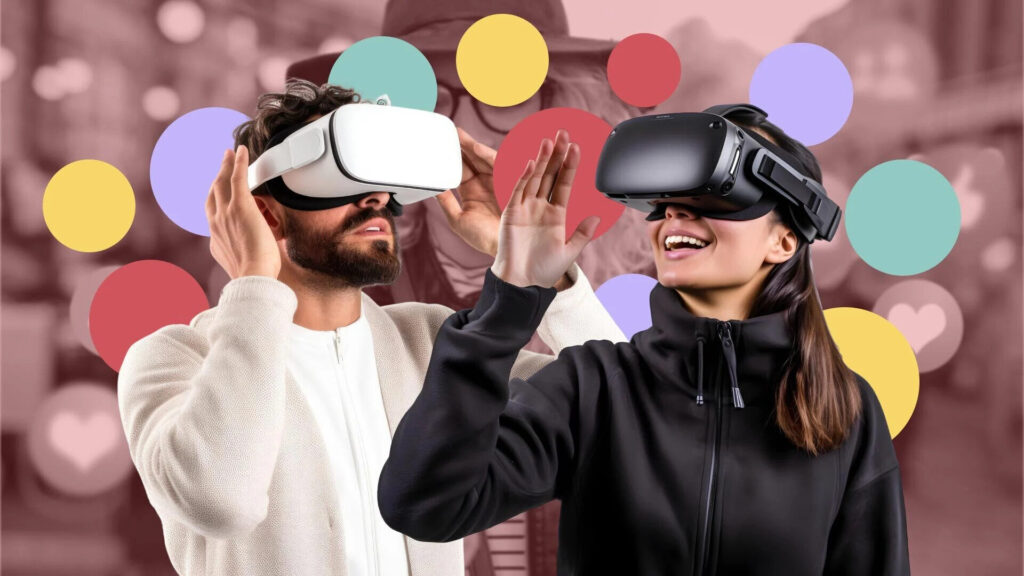By Garbanzo– Motion Graphics and Animation Studio
Why AR & VR Are Changing the Future of Digital Experiences
The way people interact with digital content is evolving. Consumers no longer want to simply watch. They want to experience it. Augmented Reality (AR) and Virtual Reality (VR), often developed by the biggest animation studios, are revolutionizing industries by creating interactive, immersive experiences that engage audiences like never before.
From AR shopping experiences to VR-powered training simulations, brands partnering with the biggest animation studios are leveraging these technologies to drive engagement, improve storytelling, and enhance customer experiences.
However, many businesses hesitate to adopt AR and VR due to:
- A lack of understanding about how it works
- The misconception that it’s only for gaming
- Fears of high development costs
The truth? AR and VR, especially when crafted in collaboration with the biggest animation studios, are more accessible than ever and can be applied to nearly every industry to create unforgettable digital experiences.
This blog will explore how AR & VR content, backed by the creative expertise of the biggest animation studios, is transforming marketing, entertainment, and customer engagement and how businesses can take advantage of this powerful technology.

What Are AR and VR? How Do They Work?
Augmented Reality (AR): Enhancing the Real World
AR overlays digital content onto the real world through devices like smartphones, tablets, and smart glasses.
Examples of AR in Action:
- Instagram and Snapchat filters
- AR-powered shopping experiences (like IKEA’s furniture placement app)
- Google AR search results (3D animals, objects, and educational tools)
Why it works: AR allows users to interact with digital content in their real environment, making it great for retail, education, and entertainment.
Virtual Reality (VR): Creating Fully Immersive Digital Worlds
VR takes users into a completely virtual environment, blocking out the real world and replacing it with a computer-generated 3D experience.
Examples of VR in Action:
- Virtual reality gaming (Oculus, PlayStation VR)
- Real estate virtual property tours
- Corporate training simulations in VR environments
Why it works: VR offers fully immersive experiences, making it ideal for industries like travel, training, gaming, and education.
The Power of AR & VR in Digital Marketing and Business
1. Creating More Engaging Customer Experiences
In today’s fast-moving digital world, brands can’t just rely on static content, they need interactive experiences that grab attention.
- Studies show that AR and VR experiences increase engagement rates by 200% compared to traditional digital content.
- Example: Sephora’s AR-powered “Virtual Try-On” feature allows customers to test different makeup products using their phone camera before making a purchase.
Why it works: Customers feel more confident in their purchase decisions, leading to increased sales and reduced return rates.
2. AR-Powered Shopping & E-Commerce
AR is revolutionizing online shopping by allowing consumers to visualize products before buying.
- Retail giants like IKEA, Nike, and Amazon are leading the way
- Google’s AR search lets users see 3D product previews before purchase
- Example: IKEA Place App lets customers see how furniture would look in their home using AR
Why it works: Customers can “try before they buy,” reducing uncertainty and boosting confidence in online shopping.
3. Virtual Reality in Real Estate & Property Tours
Buying a home or commercial property is a major decision but VR technology is making the process easier.
- Real estate companies now offer virtual home tours, allowing buyers to explore properties without physically visiting them
- Example: Zillow and Realtor.com offer 360-degree VR property tours
Why it works: VR property tours save time for both buyers and sellers while making remote real estate transactions easier.
4. Immersive Storytelling for Branding & Advertising
Brands are shifting from traditional advertising to immersive experiences that fully engage consumers.
- VR commercials let users experience a brand’s story in a 360-degree virtual world
- Companies like National Geographic use AR to bring wildlife and nature documentaries to life
- Example: Coca-Cola’s VR holiday campaign allowed customers to step inside a festive winter wonderland using a VR headset
Why it works: When customers feel part of a brand’s story, they develop a deeper emotional connection, increasing brand loyalty.
5. AR & VR in Corporate Training & Education
Businesses and educational institutions are using AR & VR to train employees, teach students, and improve learning experiences.
- Corporate Training: Companies use VR to simulate real-world scenarios, allowing employees to practice tasks in a risk-free environment
- Education: Schools use AR to bring history, science, and art to life with interactive learning
- Example: Walmart and UPS use VR training simulations to help employees learn job skills faster and more efficiently
Why it works: VR-based training is more engaging than traditional methods, leading to higher knowledge retention.
How to Integrate AR & VR into Your Marketing Strategy
Step 1: Identify How AR/VR Can Enhance Customer Experience
Before implementing AR or VR, ask:
- What problem does my audience face?
- How can an interactive experience improve engagement?
- What platforms will users interact with? (Mobile, desktop, VR headsets?)
Step 2: Choose the Right AR/VR Technology
Different industries require different AR/VR applications:
- Retail & E-Commerce: AR-powered virtual try-ons, 3D product visualization
- Real Estate & Travel: Virtual property and destination tours
- Education & Training: VR simulations, interactive learning experiences
- Marketing & Branding: AR filters, immersive storytelling
Tip: If you’re new to AR/VR, start small with an interactive AR filter or a 360-degree video campaign.
Step 3: Work with AR/VR Developers or Use Existing Platforms
You don’t need a massive budget to implement AR/VR.
- Use existing AR tools like Spark AR (Facebook & Instagram) or Snapchat Lens Studio
- For VR, create immersive experiences using platforms like Unity or WebVR
- Partner with AR/VR development teams for customized experiences
Tip: Test your AR/VR campaign with a small audience before a full-scale launch.
Step 4: Promote and Optimize Your AR/VR Content
- Integrate AR/VR into your social media marketing strategy
- Encourage user-generated content (customers sharing their AR experiences)
- Analyze engagement metrics and improve based on feedback
The Future of AR & VR: What’s Next?
- AI-powered AR and VR experiences will create hyper-personalized interactions
- 5G technology will make AR/VR experiences smoother and more immersive
- More brands will use VR in customer service, creating virtual shopping assistants
AR & VR aren’t just trends, they’re the future of digital engagement. Brands that embrace immersive content early will have a competitive edge.

Final Thoughts: Is Your Brand Ready for AR & VR?
- AR & VR content enhances customer engagement like never before
- It makes shopping, training, and branding more interactive and memorable
- It helps brands stand out in an increasingly digital world
By collaborating with the biggest animation studios, brands can leverage cutting-edge AR & VR technology, creating immersive experiences that captivate audiences. If you’re looking to take your brand’s digital experience to the next level, now is the time to invest in AR & VR, powered by the creative innovation of the biggest animation studios. The future is immersive- are you ready to be part of it?



